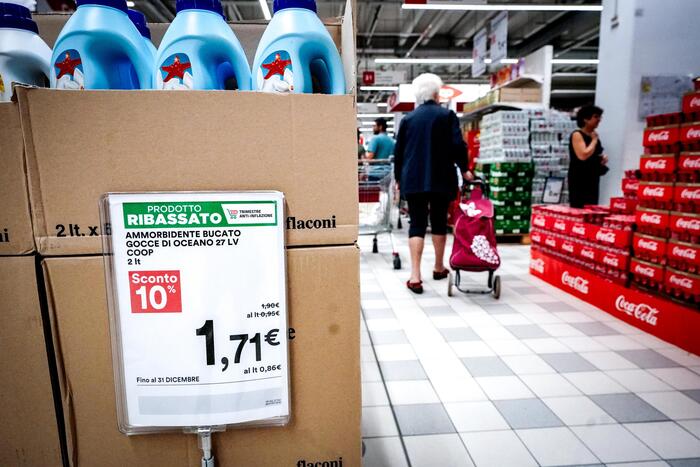In 2022, the set of household policies is estimated to have reduced inequality (measured by the Gini index) from 30.4% to 29.6%, and the risk of poverty from 18.6% to 16.8% .
Istat affirms it.
The estimates include the effects of the main measures on family income adopted in 2022: the Irpef reform;
the single and universal allowance for dependent children;
one-off allowances of 200 and 150 euros, bonuses for electricity and gas bills;
the advance of the revaluation of pensions.
The Irpef reform, the single allowance and other interventions - explains Istat - have reduced the risk of poverty for families with minor children, both couples (-4.3 percentage points) and single parents (-4. 2), especially following the introduction of the single cheque.
For one-member families (-2.1) and for the over-65-year-olds alone (-1.3) the reduction is mainly due to bonuses and the advance of the revaluation of pensions.
For families with no children or only with adult children, the risk of poverty remains almost unchanged or increases slightly.
In 2022, the single allowance led to a reduction in the risk of poverty of 3.8 percentage points for young people aged 0 to 14, 2.5 for those aged 15 to 24 and 2.4 percentage points for individuals in the age group between 35 and 44 years.
If we also consider the other policies, the personal income tax reform, bonuses and the revaluation of pensions, the risk of poverty is further reduced for all age groups
over 24.
The Irpef reform has given rise to a decrease in effective average tax rates of 1.5% for the entire population, with more pronounced reductions in three-fifths of families with medium and medium-high incomes.
Among the families that improve their situation, the average benefit is lower in the poorest fifth of the population,
characterized by the presence of taxpayers with incomes below the threshold of the
no-tax area, exempt from tax.
Families in the penultimate fifth absorb 31.7% of the total benefit of the Irpef reform which corresponds to 2.3% of family income.
Families that worsen their situation, however, suffer a higher loss in the richest fifth of the population, where more than half of the total loss is recorded.
The analyzes of the current distribution scenario - underlines Istat - only partially take into account the differential impacts
between the different income levels of the significant increase in inflation, which will be the subject of further investigations.
With the introduction of the single allowance, the risk of poverty for children under 14 decreased by 3.8 percentage points, while it fell by 2.5 for those aged between 15 and 24.
The average benefit of the single allowance is estimated at 1,714 euros (about 143 euros per month) for families who
improve their economic situation.
The highest average amounts are recorded for households belonging to the second (2,085 euro) and third fifth (1,949 euro)
However, the largest share of beneficiary households belongs to the first two fifths who also receive the largest share of expenditure on the total.
The benefit in relation to household income is highest in the first three-fifths.
The introduction of the single allowance also causes a worsening of incomes for some types of families.
For this subset, the average loss is equal to 591 euros (about 50 euros per month).
The highest loss occurs in the richest two-fifths (887 and 951 euros respectively) and in the poorest one (752 euros).
The largest percentage of families disadvantaged by the measure and the largest share of losses out of the total are concentrated in the first two fifths;
the loss, in relation to household income, is higher in the first fifth.
These are cases in which the family unit allowance had a higher amount than the new single allowance.












/cloudfront-eu-central-1.images.arcpublishing.com/prisa/S7ERVSCT4FUVX6R7TUVBDNTH5Y.jpg)


